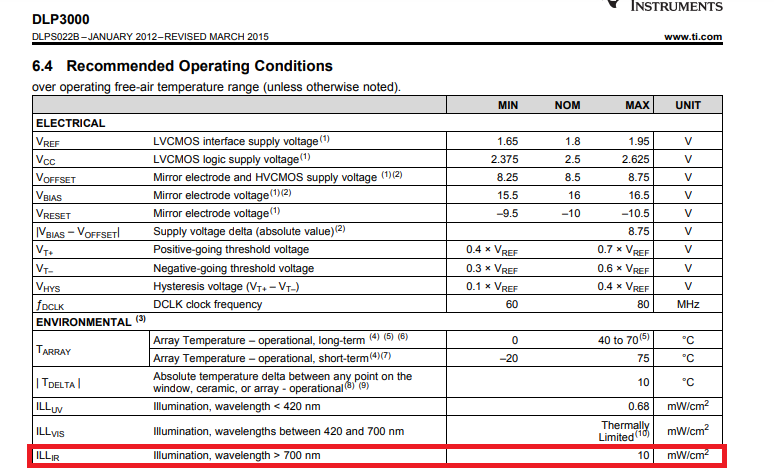Part Number: DLP3000
An experiment that uses DMD (DLP3000) with flash pumped Nd:YAG laser with an output power of 2.3mW and wavelenght of 1040nm resulted in a damaged DMD when all mirrors were set to the off-state.
Recommended operating conditions gives maximum illumination for wavelengths of greater than 700 nm is given as 10mW/cm^2. Clarity is required regarding these thresholds.
There are additional experiments planned but to avoid future damage it would be good to understand the root cause of the damage that has occurred in this case.
Note that the system was working fine before all the mirrors were set off so it is assumed that this is the root cause of the problem.



